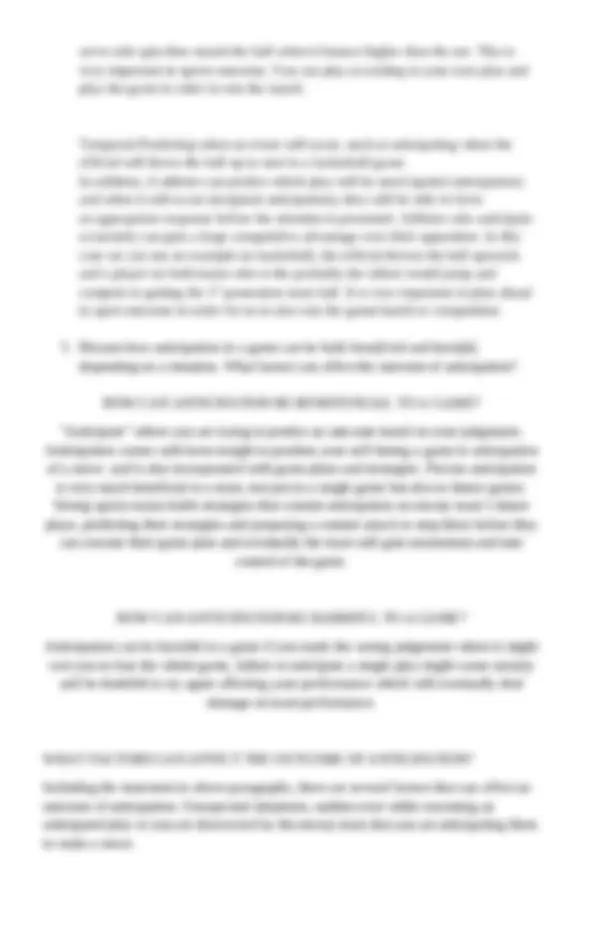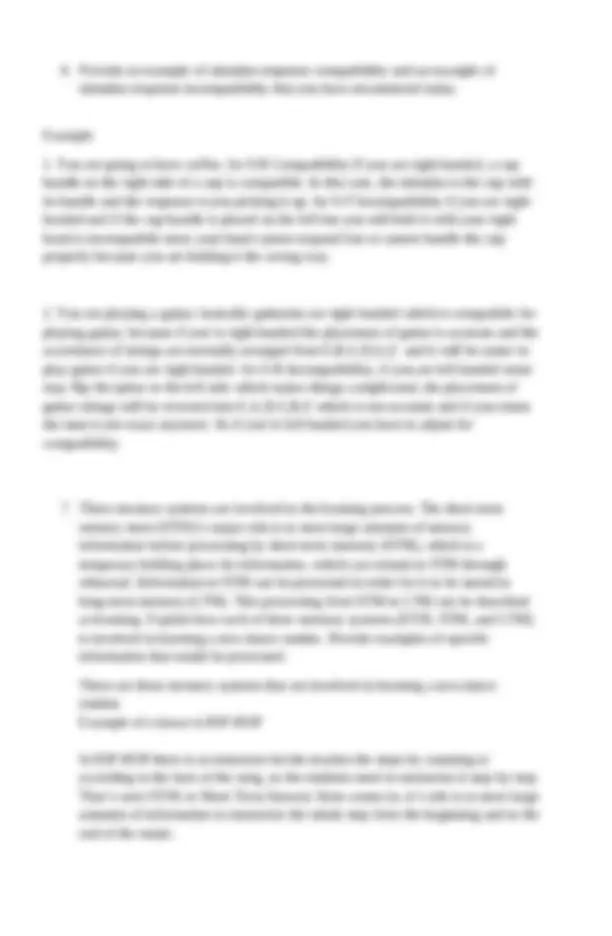





Study with the several resources on Docsity

Earn points by helping other students or get them with a premium plan


Prepare for your exams
Study with the several resources on Docsity

Earn points to download
Earn points by helping other students or get them with a premium plan
Community
Ask the community for help and clear up your study doubts
Discover the best universities in your country according to Docsity users
Free resources
Download our free guides on studying techniques, anxiety management strategies, and thesis advice from Docsity tutors
Answers for CHAPTER 2 MOTOR SKILLS
Typology: Exercises
1 / 5

This page cannot be seen from the preview
Don't miss anything!




Check Your Understanding
predicament within a scenario. In baseball, the pitcher has to predict how fast or where will the rotation of the ball be, after that, he needs to make a stance so when he release the bat into the ball, it is perfectly set to hit the ball within a short amount of time. In badminton, It has the same principle, but it is passing the shuttle from one to another, preventing it from falling from either sides. So it has much faster predicting than the baseball. You have to constantly predict by observing the opponent's stance in order for you to make your own stance as well. Badminton players do this because if the opponent smash, the player have a mili second to aim his rocket to that fast flying shuttle. The ability to forecast the time of upcoming sensations and activities, known as temporal anticipation, is critical for adaptive behavior. Multiple sources can be used to construct temporal anticipation. Temporal Anticipation can simply be define as when something is going to happen. Example: 1. When the official will throw the ball up to start to a basketball game. 2. Football, when the defender tries to guess when will the attacker will actually pass the ball
In STM or Short-Term Memory you just need to memorize a bit of it like doing a rehearsal for example: dancing the chorus of your chosen song. It helps you to remind whats the next step and refreshes your mind how the flow of the dance could be. And last but not the least the LTM or Long-Term Memory. This memory system just not memorize a certain step or a one whole song but, two or more songs. Of course as a HIP-HOP dancers they dance to every sings that are old and new trending songs, if a certain song is played even though it is long gone since they practice they still memorize and know what is the steps on that songs.